Ever wondered how to soften the recoil on your rifle?
Maybe you went with a big-bore AR in .450 Bushmaster or .50 Beowulf.
Maybe you are rocking a .223 Wylde for competition shooting or varmint hunting and would like to stay on target for faster follow-up shots.
Regardless of your reasons, there are theories and practices on how you can reduce felt recoil and handle the weapon more efficiently.
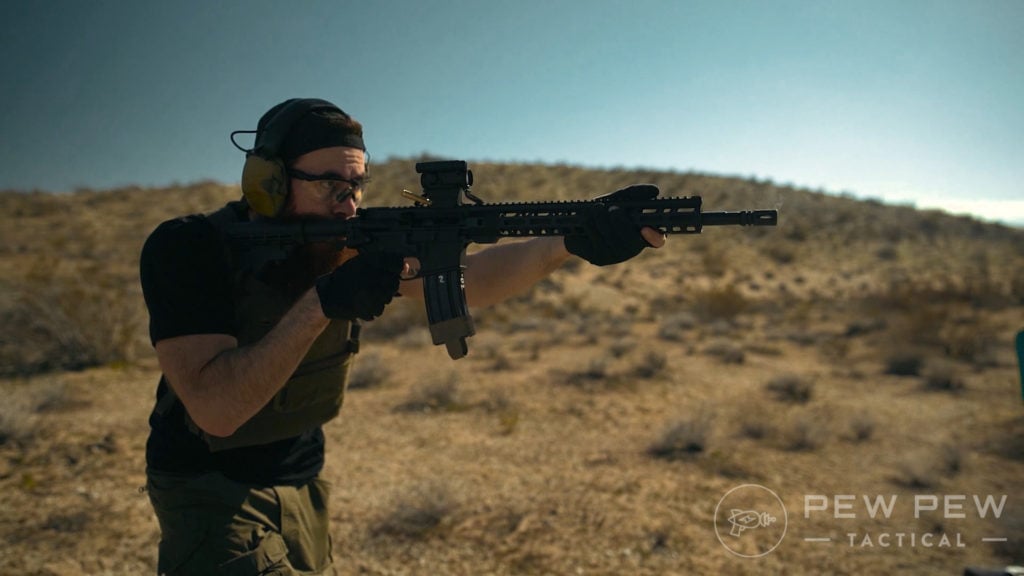
In this article, I will be going over things you can do or upgrade as a shooter to mitigate felt recoil and whether it is a good idea for you.
Most of these options include upgrades from standard kit. I will also be going over proper stance, which is FREE!
On top of that, I did my own scientific experiment to show an actual reduction in recoil that you can see with your own eyes. Hold onto your butt’s ladies and gentlemen.
Science class is in session.

Table of Contents
Loading…
How We Tested Reducing AR-15 Recoil
I decided to test out some different products for recoil mitigation in the AR15. I built a contraption to hold an AR15 and act as a sled.
The bottom of the sled has four chair casters attached. The sled was then placed onto a whiteboard to provide a smooth surface to slide on.
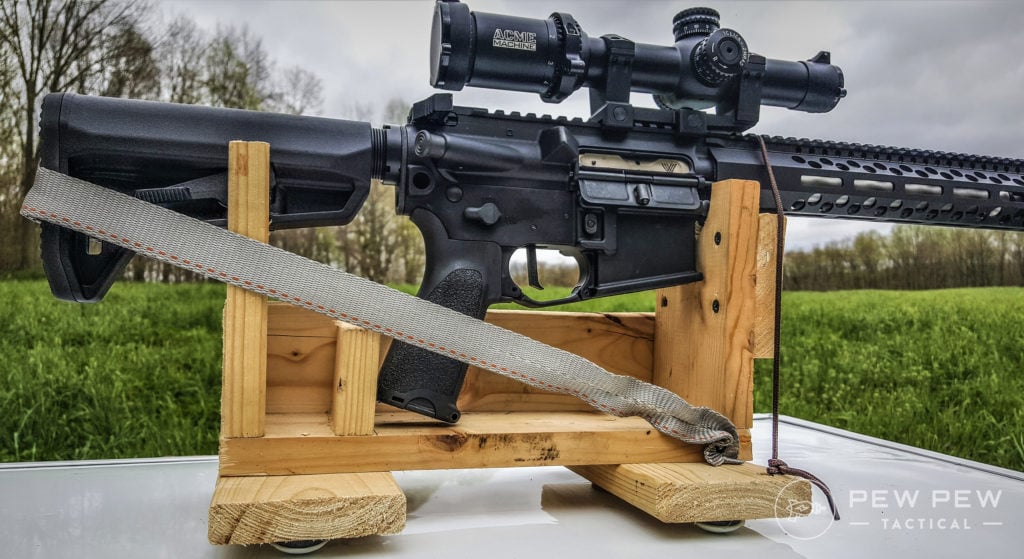
The point of this hillbilly set up was to show the force of the recoil and have a practical way to measure it by the distance the sled traveled rearward.
The further the sled shifts backward, the more force in recoil the rifle would have.
Ammunition used was Hornady Frontier 68 grain BTHP.
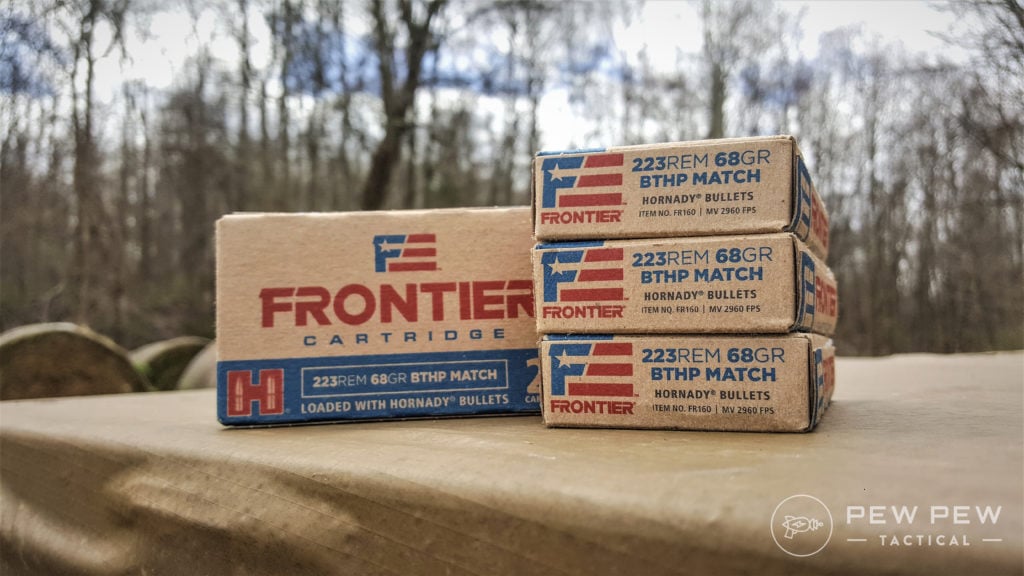
As a control, I grabbed a typical 16” AR15 with a mid-length gas system with a wide-open gas block.
The buffer and spring were a typical carbine set up and a bolt carrier group with the standard auto cut, plus a three-prong flash hider.
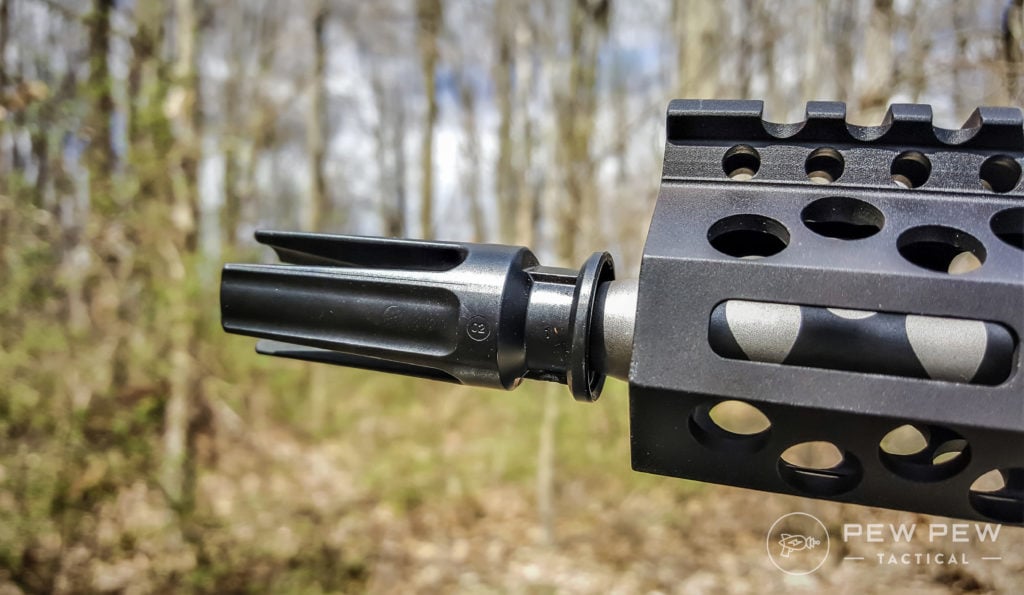
Three shots were fired with each change of the rifle, and averages were used to find the percentage of recoil reduction for each change.
In order, an adjustable gas block and then a skeletonized carrier was used in tandem with the adjustable block.
A muzzle brake was then added to test a trifecta of kit for recoil mitigation.
Average travel for the baseline control was 13.33”.
How’d the upgrades do? Let’s find out by the numbers.
Proper Stance
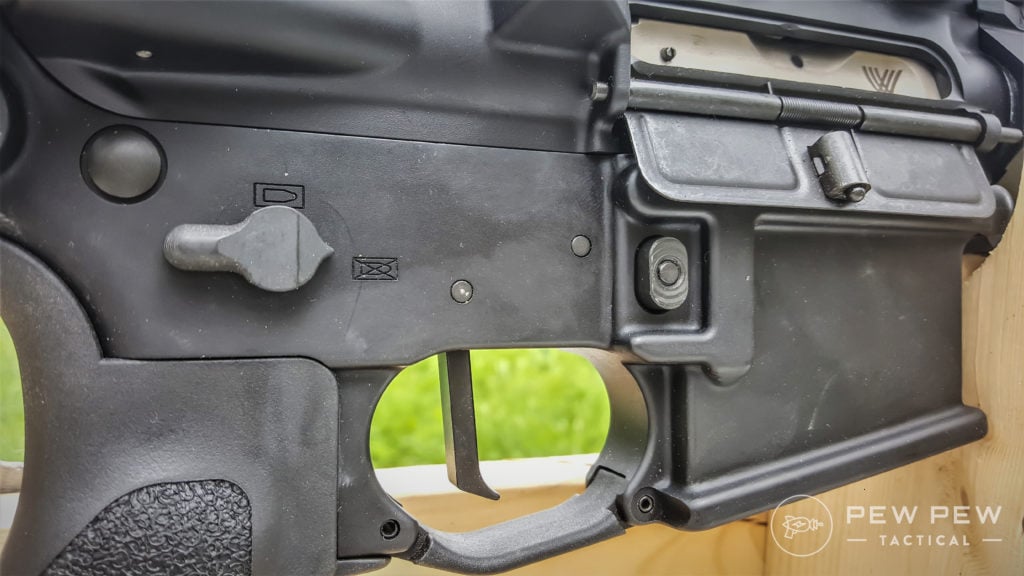
People are quick to buy stuff to make their problems go away.
Troubles in the bedroom, buy a pill for it. Mid-life crisis, buy a Corvette. Can’t hit your target, buy a full-auto.
A quicker and more economical way of fixing your problem is to first analyze what YOU might be doing wrong. For bedroom advice, read a different article.
If you take a good look in the mirror, you may be able to change how you handle your AR to better mitigate felt recoil.
Proper stance can help more than you might think, and its all based on physics. The more mass you have behind the rifle, the less it’s going to move.
This doesn’t change how much recoil is going back into your shoulder, but it will keep the gun more controllable which is half the battle. During my time in the Marine Corps, the modern fighting stance was drilled into me while handling a firearm.
While recoil isn’t much with an AR chambered in 5.56 NATO, when you step it up to a 12 gauge with 3” magnums, stance is much more important. The difference is much more noticeable.
Whether you want to use an Isosceles stance, a hybrid fighting stance, or what some call a “linebacker stance”, getting more mass behind the weapon will provide a more stable platform for recoil.
With only a little training and range time, you can luckily do this FOR FREE and anyone can benefit.
Adjustable Gas Blocks
Gas pressure that is siphoned through the gas tube operates your direct gas impingement AR15. That gas pressure is dictated by the gas port size of your barrel.

A larger port allows more gas flow, while a smaller port reduces pressure.
An adjustable gas block can be tuned to allow only the minimal amount of gas to operate the firearm.
This translates into less violent force operating your bolt carrier, especially if your AR is overly gassed. This doesn’t necessarily mean you should go this route though…
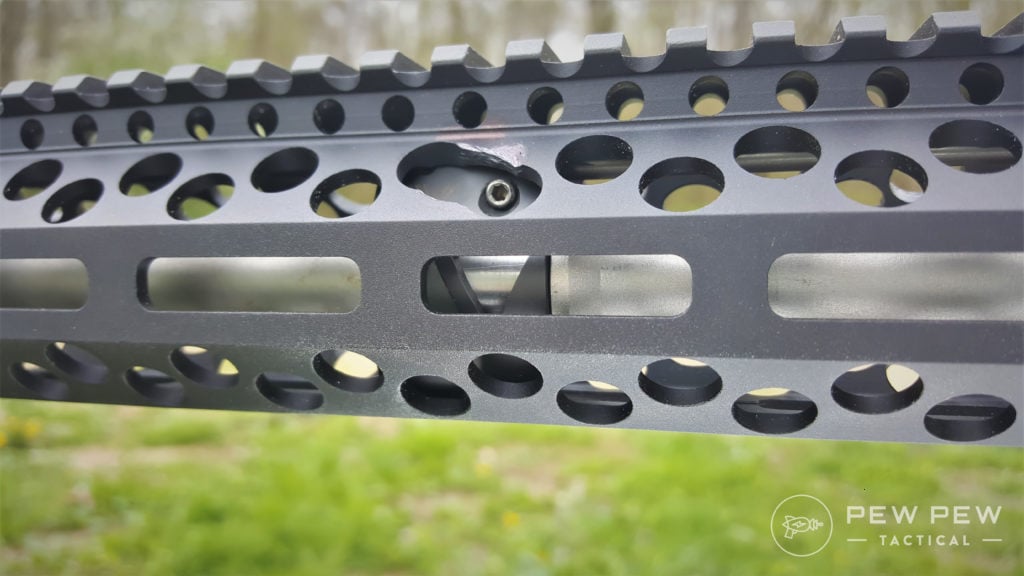
An adjustable gas block is more prone to failure and to carbon “lock-up”. Without proper maintenance, the gas block set screw that adjusts pressure can seize in place due to carbon fouling.
I would not recommend this set up for a duty/patrol rifle. For a competition/hunting rifle that will likely use only one type of ammo, go ham on it.
The adjustable gas block used for this testing was supplied by Velocity. Installation was a breeze. It uses a typical setup using an adjustable screw with a locking set screw.
Overall, the reduction of felt recoil dropped by 10% to 12” of average rearward travel.
Check out more of our favorite Adjustable Gas Blocks.
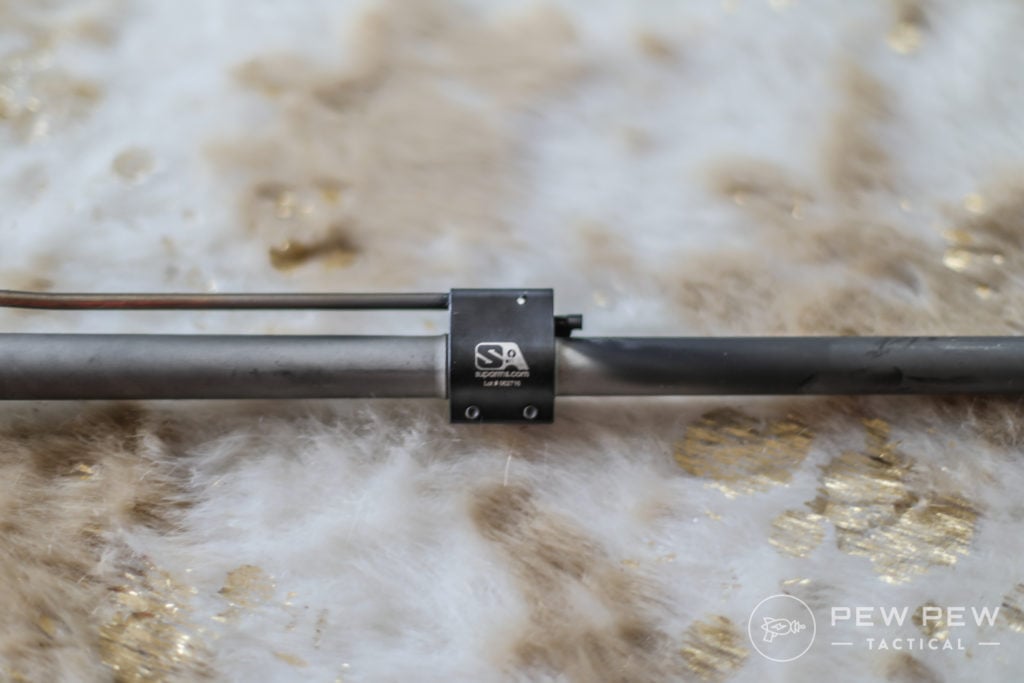
For the rest of the PPT team our go-to is the Superlative Arms.
Prices accurate at time of writing
Prices accurate at time of writing
-
25% off all OAKLEY products - OAKLEY25
Copied! Visit Merchant
And once you do get an adjustable gas block…check out our guide on Tuning the AR-15 Gas System.
Skeletonized/Lightweight Carriers
Searching around the internet for parts, you have probably seen lightened, or skeletonized carriers for the AR15.
They may be skeletonized to shave weight, or they may be made from unorthodox materials like aluminum or titanium for weight reduction.
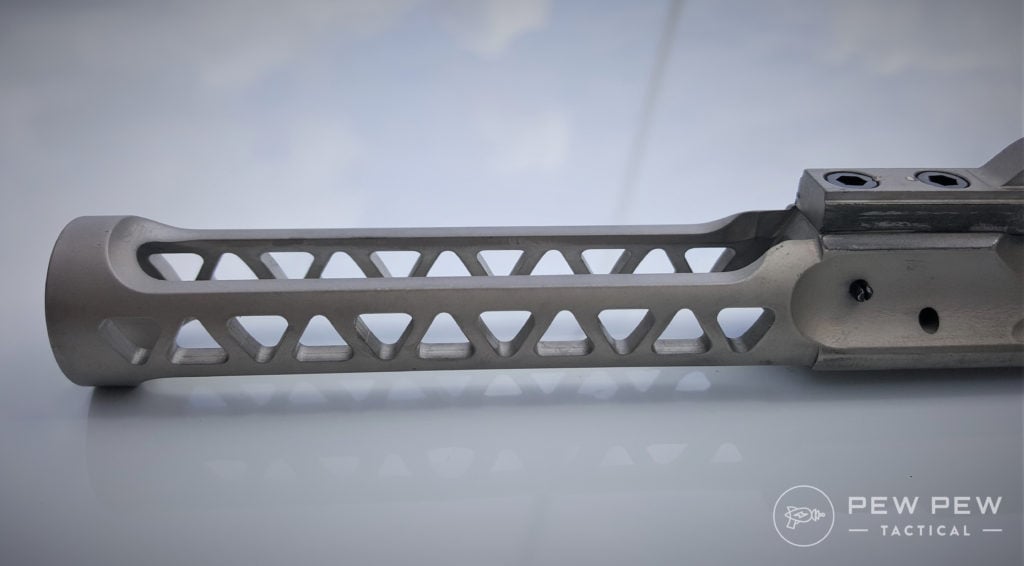
There are two benefits by going this route. The first being weight reduction for the overall weight of the rifle.
If you are trying to build an ultralight AR15, going with a carrier as mentioned above will shave weight off one of the heaviest portions of the rifle.
The second benefit is recoil reduction due to less reciprocating mass in the firearm. A portion of the felt recoil in your shoulder is the mass of the carrier cycling.
But how much does it factor in?
The carrier sent to me was also from Velocity. It proved to reduce recoil by another 18.75% in conjunction with their adjustable gas block.
Weight of the carrier is only 6.8 oz and is nearly 3 oz. lighter than an auto-cut carrier with a Nano Diamond Nickel coating.
Prices accurate at time of writing
Prices accurate at time of writing
-
25% off all OAKLEY products - OAKLEY25
Copied! Visit Merchant
Check out more of our favorite lightweight BCGs in Best Bolt Carrier Groups.
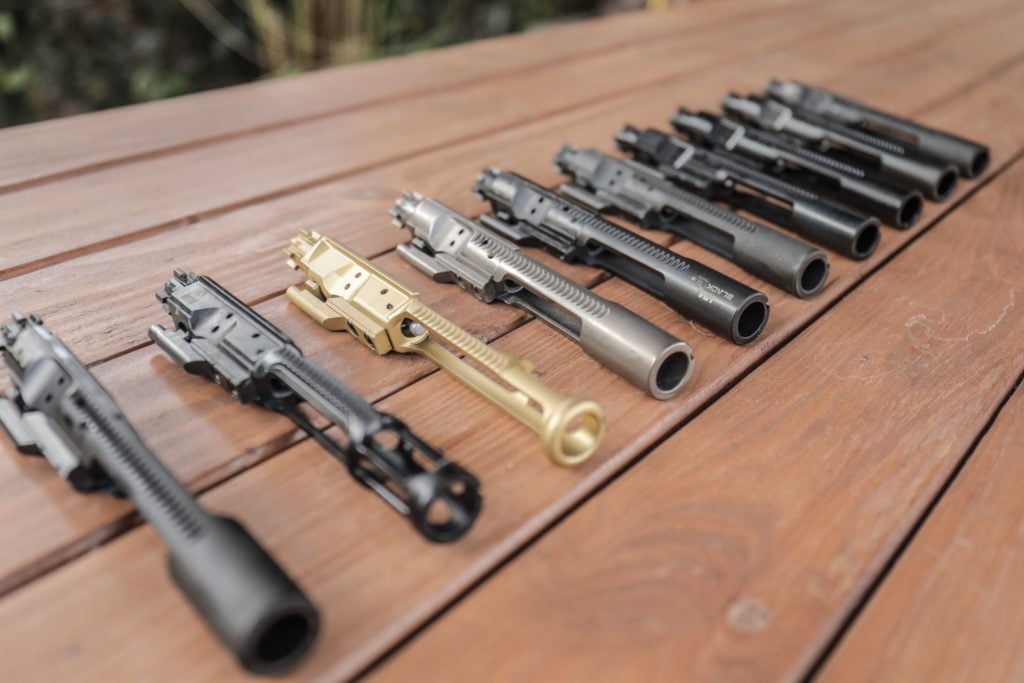
Muzzle Brakes and Compensators
A lot of people make the mistake of calling a muzzle brake a compensator or vice versa.
There is a difference.
A muzzle brake redirects muzzle blast energy to the sides.
A compensator redirects gas pressure vertically to keep the muzzle from rising.
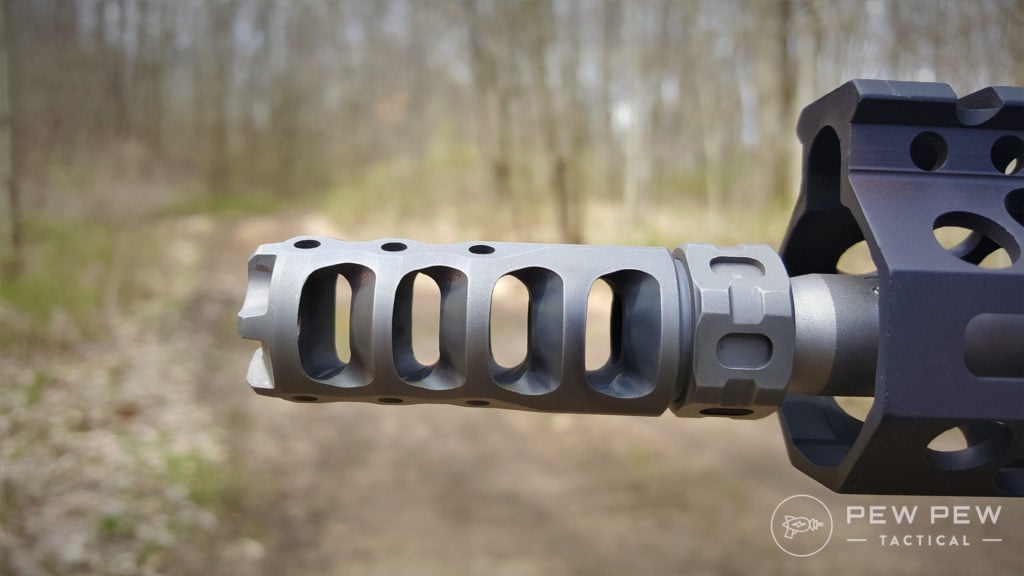
The good people at Precision Armament sent me their new Hypertap model to test and evaluate. The Hypertap uses a self-timing collar and allows shooters to drill out dimpled areas to provide compensation as well.
I took it upon myself to drill out the top ports which were a hassle-free task with my drill press and a 1/8” bit.
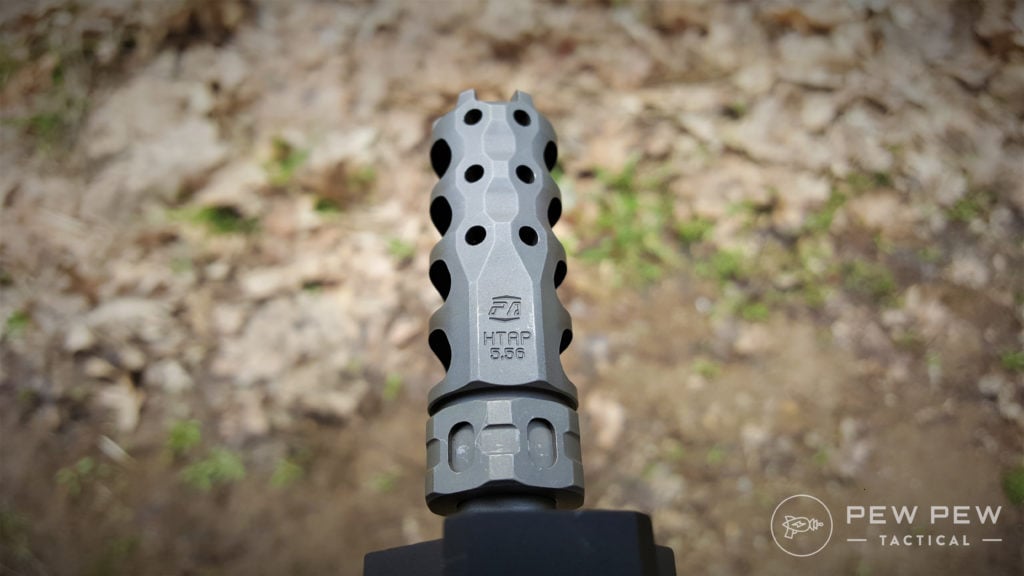
Their claim is that shooters can expect 84% in recoil reduction or better, which is nearly 10% more effective than their previous model, the M4-72 Severe Duty. That is a huge claim and worth testing out for accuracy.
Based on my calculations, I saw nearly a 90% DECREASE IN FELT RECOIL. 90% REDUCTION.
That is straight bananas!
Movement was barely noticeable, and I took some shots with it in my shoulder.
With everything used together, recoil was practically zero with no muzzle rise.
I also went back to the baseline set up with the rifle but kept the Hypertap muzzle brake installed. I wanted to test the brake with a standard auto carrier and standard gas block.
Without the adjustable gas block and skeletonized carrier, the Hypertap still reduced felt recoil by 87%!
It’s obvious that a good muzzle brake can drastically reduce felt recoil. But it doesn’t mean it is for everyone.
A duty/patrol rifle would do better with a flash hider that reduces flash signature and doesn’t apply blast to the sides of the shooter, IMO.
But for hunting or competitions, brakes can be useful.
Prices accurate at time of writing
Prices accurate at time of writing
-
25% off all OAKLEY products - OAKLEY25
Copied! Visit Merchant
By the Numbers
So, let’s recap.
| SETUP | SHOT #1 | SHOT #2 | SHOT #3 | Average | Average % |
|---|---|---|---|---|---|
| Baseline | 13.75” | 13.00” | 13.25” | 13.33” | — |
| Adj. Gas Block | 12.25” | 12.00” | 11.75” | 12.00” | 10% |
| Added Carrier | 10.75” | 10.75” | 11.00” | 10.83” | 18.75% |
| Added HTAP | 1.5” | 1.25” | 1.5” | 1.42” | 90% |
| HTAP Only | 1.5” | 2.0” | 1.63” | 1.71” | 87% |
We saw a 10% reduction in felt recoil by adjusting the Velocity adjustable gas block to a minimal setting to allow proper function.
Keep in mind, a larger reduction could be possible if YOUR rifle were more over gassed. The barrel I was using was efficient in the gas department.
After adding the Velocity Recoil-Less carrier and readjusting for function, recoil was dropped to a total of nearly 19% from the baseline setup.

YMMV with a different weighted carrier. Some skeletonized titanium carriers are a few ounces lighter.
The Hypertap is amazing. The proof was in the pudding, and I saw a nearly 90% reduction in felt recoil when joined with the adjustable gas block and skeletonized carrier.
It still managed to drop recoil to 87% as a stand-alone upgrade. They have done an amazing job with their new brake.
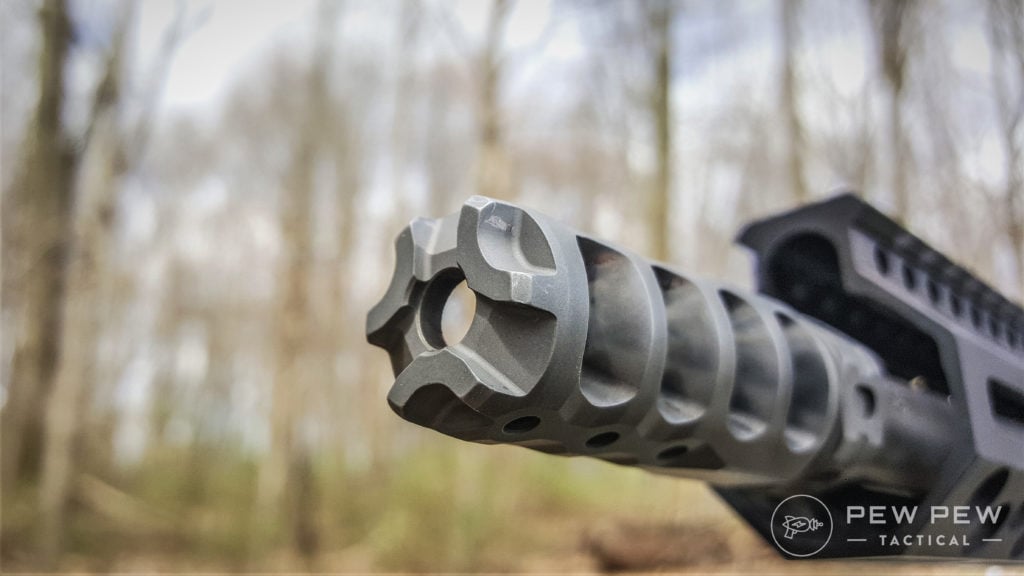
Now I understand that my hillbilly contraption and set up isn’t the epitome of a scientific experiment, but I think it helps visualize the overall reduction in felt recoil when using different upgrades.
Honorable Mentions
This was a limited test trying only just a few options, but there are LOTS of other great choices on the market. And with shortages going around right now, you might need more than 1 option just to find something in stock.
Here are some of our other favorites, we didn’t run them through the testing like above — but we have used them a lot and can attest to their effectiveness.
Buffers, Buffer Weights, Buffer Springs, Etc.
Generally speaking, tuning your rifle by way of the weight in the buffer or the spring strength isn’t a great path to take.
The weight in an AR buffer is there to help the BCG stay closed and prevent bolt bounce, not to tune the recoil system.
While reducing the weight of the buffer might be required if you’re using a lightweight BCG, it is only doable with an adjustable gas block also.
Generally, you won’t be using all three methods at the same time unless you’re building a race gun.
However, we have used one product that actually helps reduce felt recoil AND doesn’t screw with the buffer weight. The KynSHOT.
KynSHOT
This is a hydraulic buffer instead of a traditional dead weights. Basically, it’s a small piston and some hydraulic fluid.
When it reaches max travel the piston compresses and absorbs some of the energy.
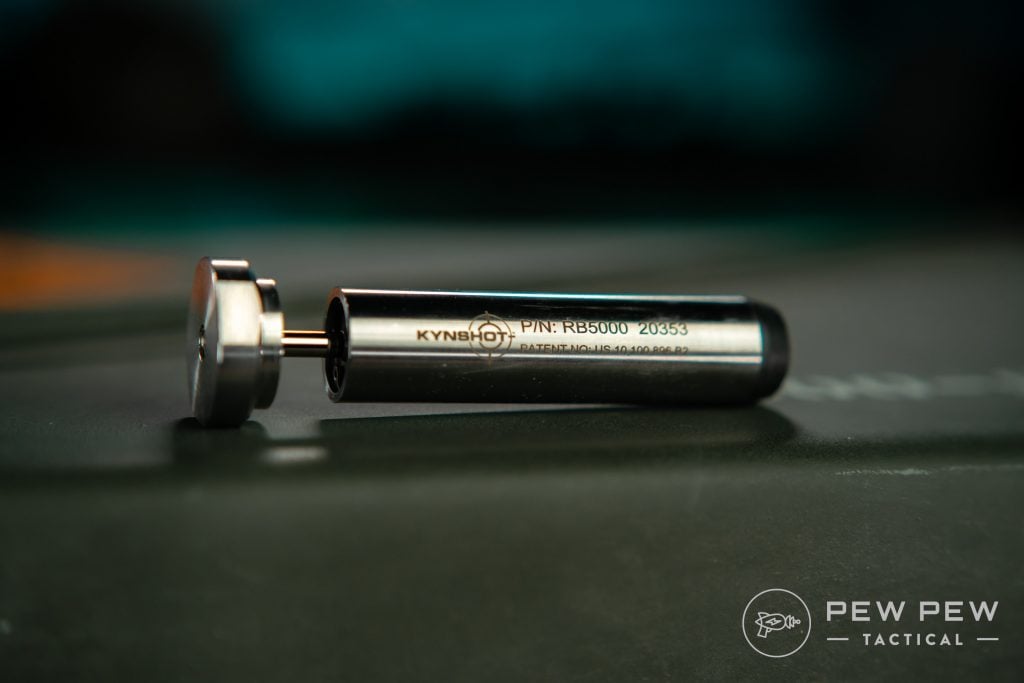
On the way back it does the same thing for the BCG and acts as a deadblow hammer just like normal buffer weights do.
While this might not seem like much, it actually makes a BIG difference when you’re shooting it. We used the KynSHOT in our WWSD 2020 rifle and felt an immediate difference.
This is a 5.6lb rifle unloaded, so every bit of recoil reduction helps to keep the rifle from bouncing all over the place. The KynSHOT instantly makes it shoot flatter and stay on target.
Prices accurate at time of writing
Prices accurate at time of writing
-
25% off all OAKLEY products - OAKLEY25
Copied! Visit Merchant
Big thumbs up from us.
Muzzle Brakes
You gotta check out the complete Best AR-15 Muzzle Brakes for all of the tested details, but these are a couple of the best.
Precision Armament M4-72
For the max amount of recoil and reticle movement reduction, the M4-72 is your answer. But if you have friends that like to stand next to you on the shooting line… well they might not like you much by lunchtime.
This brake has a LOT of side blast to it, that’s why it is effective, but that makes it unpleasant to be near.
Prices accurate at time of writing
Prices accurate at time of writing
-
25% off all OAKLEY products - OAKLEY25
Copied! Visit Merchant
VG6 Gamma
If you’re on a budget, the VG6 Gamma might be a more practical pick up. We have these on a host of rifles and love each of them, it’s a simple but very effective brake that you can find for a great price.
If you want to cut down on side blast, look into the VG6 Cage Device also!
Prices accurate at time of writing
Prices accurate at time of writing
-
25% off all OAKLEY products - OAKLEY25
Copied! Visit Merchant
Bolt Carrier Groups
Rubber City Armory Titanium BCG
A Cadillac among BCGs, Rubber City Armory makes some of the best — period. This is their Titanium model providing a huge reduction in weight coming in at 7.8oz, while maintaining truly long-lasting durability.
But it’s expensive, so get ready for some wallet shock.
Prices accurate at time of writing
Prices accurate at time of writing
-
25% off all OAKLEY products - OAKLEY25
Copied! Visit Merchant
Faxon Lightweight BCG
A much more economical option, but still a true reduction in weight, is the Faxon Lightweight BCG. We’ve run Faxon BCGs in competition and in HD rifles, so we can safely say that these are ones that we trust.
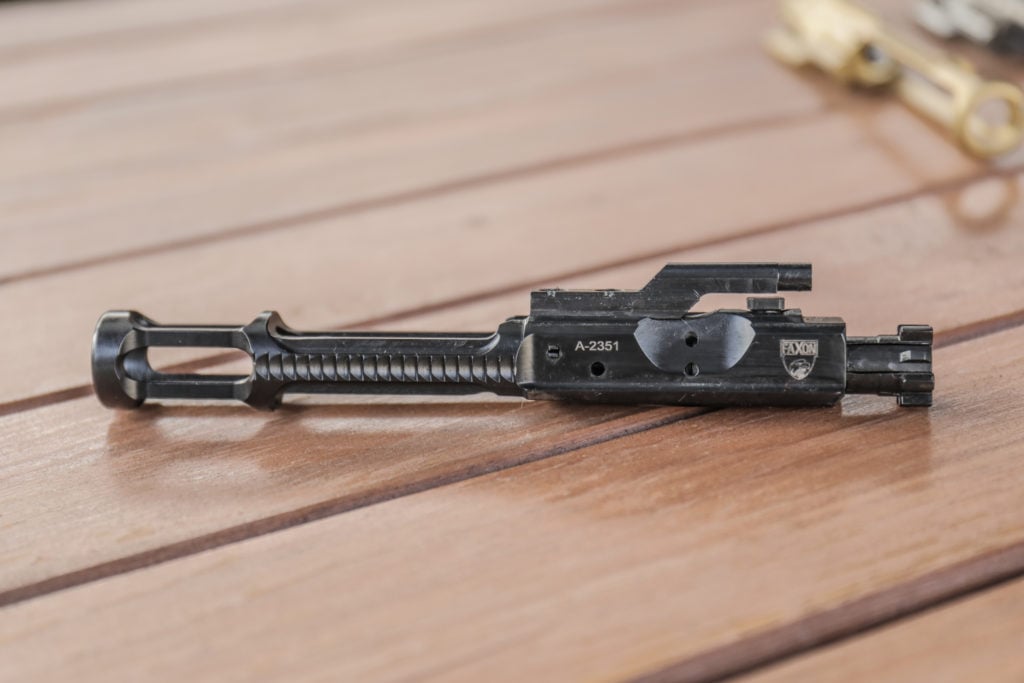
Prices accurate at time of writing
Prices accurate at time of writing
-
25% off all OAKLEY products - OAKLEY25
Copied! Visit Merchant
They might not be flashy, but you’ll have green in your pocket at the end of the day for more ammo and have a great BCG!
Cryptic Coating Lightweight BCG
We have a big review of these coming soon, but the short version is that Cryptic Coating are BCGs that use some dark magic as their coating!
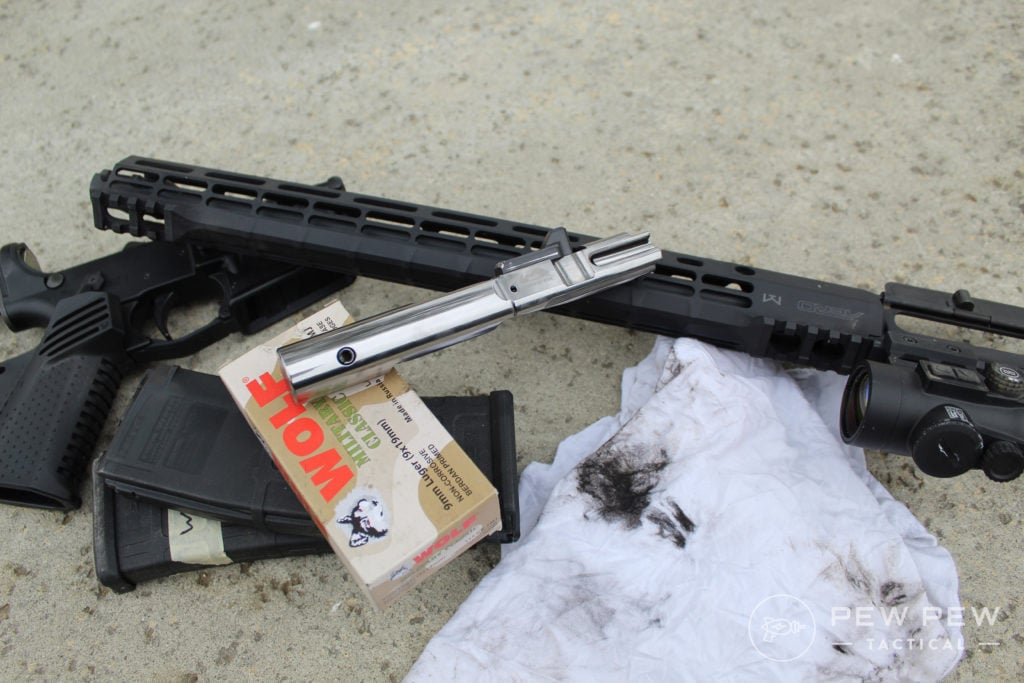
These ultra-slick coatings provide a surface with such reduced friction that it feels self-lubricating and only requires the most minimal coating to function with ease.
Cleaning is a knock-out easy task, literally just wiping off all of the gunk is all that is needed.
Prices accurate at time of writing
Prices accurate at time of writing
-
25% off all OAKLEY products - OAKLEY25
Copied! Visit Merchant
Plus, they are durable, great looking, and a middle price between contenders.
Adjustable Gas Blocks
Superlative Arms Adjustable Gas Block
Superlative Arms takes first place in most adjustable block reviews and for good reason, they are just that good.

We use them on a lot of our personal rifles!
Prices accurate at time of writing
Prices accurate at time of writing
-
25% off all OAKLEY products - OAKLEY25
Copied! Visit Merchant
One of the huge benefits to the Superlative Arms block is the bleed off hole to reduce gas blowback. Plus, it’s easy to adjust and just works. Always.
Seekins’ Adjustable Gas Block
A gas block is a gas block to some, if you want good adjustment but don’t want any bells and whistles, Seekins’ is the block for you.
Some handguards make it a little hard to reach the adjustment, but once you have it set you won’t need to fuss with it again.
Prices accurate at time of writing
Prices accurate at time of writing
-
25% off all OAKLEY products - OAKLEY25
Copied! Visit Merchant
Good to go and a good price.
Parting Shots
Reducing recoil is always a benefit to the shooter. Faster follow-up shots, more accurate lead flung down-range.
And it feels better after a long day of shooting.
Now that you’ve seen the proof behind the claims, you can make a better decision on what your next upgrade will be.
Do you have a reason to lighten up the recoil from your AR? Have you ever tuned a rifle with an adjustable gas block and skeletonized carrier? Have you ever noticed a difference in tuning your rifle for competition shooting or hunting?
Want to learn how to tune your rifle? Take a look at Tuning the AR-15 Gas System [Less Recoil, Duty, & Suppressed]! And don’t forget to get some Best AR-15 Optics!
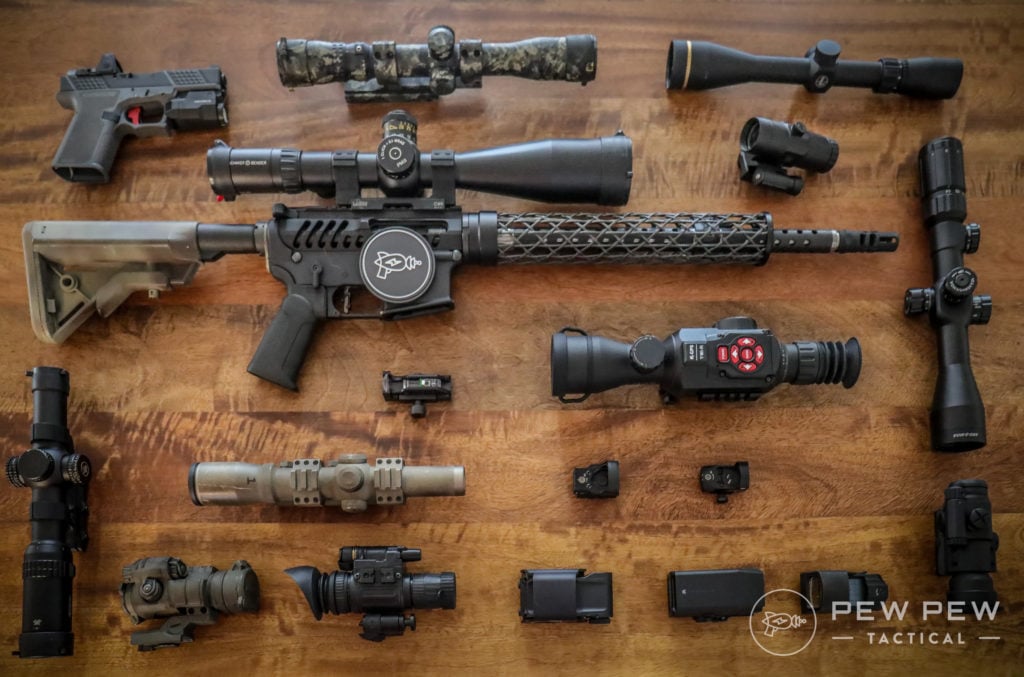

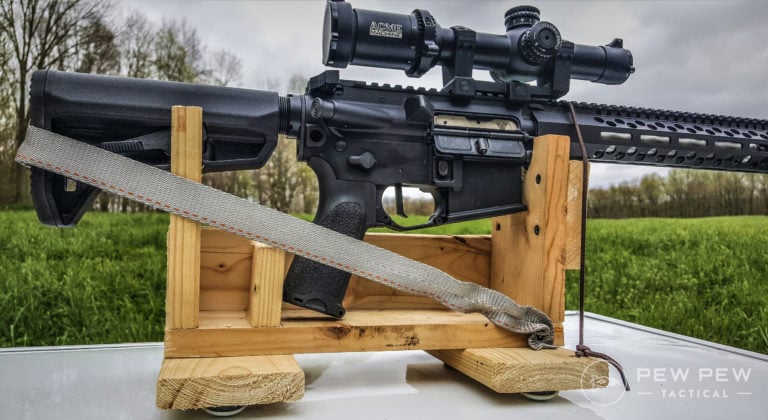
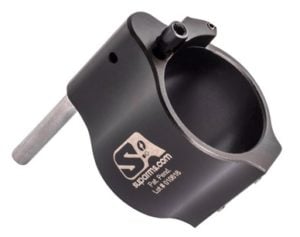
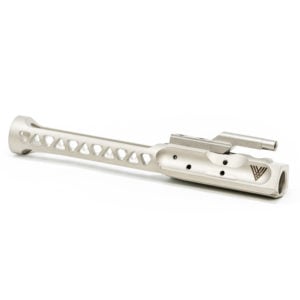
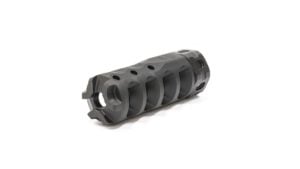
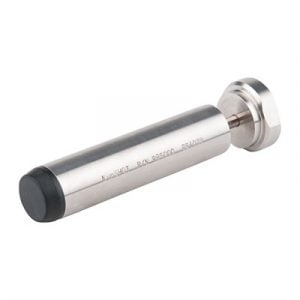
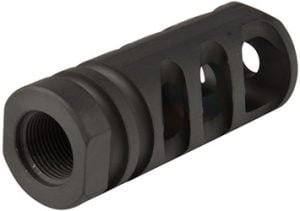
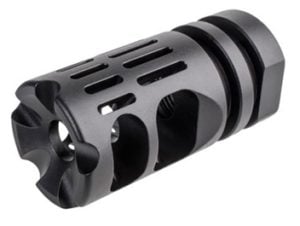
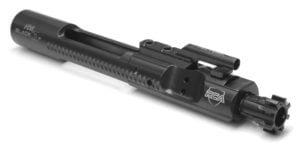

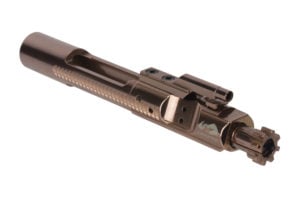
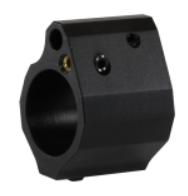







18 Leave a Reply
Did you consider switching out the buffer to help with recoil reduction? KynSHOT's hydraulic recoil buffer would have been an interesting addition to this testing and I believe you would have seen a noticeable difference in the measured recoil.
Great explanation and review
Also does buffer and spring doesnt help to reduce recoil felt? How bout pairing h2 buffer with light mass bcg?
Technically yes, really no. But you're going to run into gas problems. In order for an H2 and a lightweight BCG to work, you would need a huge amount of gas -- more than is likely possible with a standard gas port size. More gas = more felt recoil also, so it becomes self-defeating.
So I built one pretty muck exactly the same way but I added the Zulu but stock fax on heavy barrel(which is actually light) how captured spring and it honestly has no felt recoil at all. I can provide you a parts list if you want on my last build. Oh and I can poke out consistency to 700yrds with Honady Match ammo
P.S. I'm pretty sure any recoil reduction you have demonstrated is more due to how man pieces you are adding to the rifle - additional weight - than the weight reduction from any one individual piece, like the skeletonized BCG. Stronger buffer springs will likely reduce recoil, too, which will be needed, since a lighter BCG will be pushed harder than a heavier one. When I load "bear loads" (hot 220grain WFNGC bullets) in 10mm for my G20, I use heavier recoil springs to maintain reliable function and reduce possible battering of the slide and associated parts. Any lightening of the action parts in your AR should be protected with a heavier buffer spring than normal, based on the reduction in BCG weight or increase in the power of your ammo (like the difference between NATO M885 vs .223 40 grain varmint loads). I don't remember - although you probably know from having served - whether there are 5.56 ammo types made for the M249 or other SAWs (HK, etc.) that require heavier buffer springs, but I know there was a difference between some ammo for M14s and M60 7.62x51 machine guns. Or at least there was back in the late '60s and early '70s when I served in the USN. This is also true for the HK family of 7.62x51 rifles/machine guns. I purchased a heavier buffer/spring combo for my HK 91 when I began using surplus military ammo, especially some Russian stuff that ran hotter than US Lake City ammo.
As far as different ammo goes, while I was in the Marine Corps, there was no change of buffer or recoil spring. We only stuck with M855 ammunition that have the 62 grain SS109 penetrator. Other ammo has been starting to make its way through the military, such as the Mk318 loads my Marines are using, M855A1 loads the Army is using, and Mk262 ammo that is seeing use within the SF community. To my knowledge, no change has been made with the buffers or springs, with maybe exception to the M855A1 loads because they are extra spicy.
I'm a bit confused here. Reducing the weight/mass of the weapon usually _increases_ felt recoil. Shooting .357 mag ammo through a titanium S&W snubbie vs through a heavier stainless steel snubbie of the same size and model results in a _lot_ more recoil. So reducing the BCG mass/weight, along with the weight of other parts should not - according to physics - be reducing recoil (and think of the heavier buffer springs used when shooting more powerful ammunition). The same force on the rifle produced by the escaping gases on any ammo with a particular weight of bullet will exert more push on a lighter rifle than a heavier one. Don't confuse the difference in recoil between a light bullet and a heavier bullet with the recoil (produced by the same ammunition, either light or heavy bullet weight) on a light weapon vs a heavier weapon.
Reducing the weight of the rifle will ultimately increase felt recoil. You are correct on that. But part of the recoil is also the reciprocating mass of the BCG. If you were to reduce the overall weight of the rifle, with say lightweigh receivers, and a pencil barrel, you may notice a difference. Eliminating a few ounces on just the carrier, while adjusting the gas ultimately wouldn't have a huge impact on recoil, and my testing shows that it does reduce the recoil, but only a marginal amount. Ammunition can also play a role, but the ammo stayed the same throughout the entirety of testing.
So yes if reduce “static” weight on the weapon it will increase recoil. However all of the above fore mentioned reductions are a decrease in “reciprocating” weight not static weight. This reduces recoil. Conversely you could make a gun super heavy and unwieldy and it will barely move when fired but that’s impractical.
Regarding your sled you poked fun at, I thought it was genius.
In the Marines, we said "If it sounds stupid, but works, it isn't stupid"!
Great job, excellent creativity and problem solving, and I believe your analysis is right on.
I'm experimenting with reducing recoil with the heavier H2 buffer especially with the AR 7.62 x 39 upper, but also the 5.56 11" bbl AR pistol, and two different increased spring rate buffer springs, one moderate one stronger. In 7.62 this can also slow down the cycling a whisker for better lockup. What a fun hobby.
Have you ever done anything like this for the AR10?
The same ideas would apply, the systems are basically identical just scaled up.
Enjoyed the review. Did you happen to test anything with a silencer attached?
Thanks for the great and thorough test of different components to reduce recoil. Your test sled did a super job of showing the relative differences in recoil with all of the components you tried. Thanks again!
PSA makes a super affordable lightweight bcg. Aluminum $99. Probably not the one you want to deploy with, but lifetime warranty and I’ve put plenty of rounds through mine with no issue.
Cheap adjustable gas blocks fails and when they do fail, they still work, they just seize the screw up. The superlative arms one doesn't fail because it's designed differently.
Don't sell yourself short! I thought this setup for actually visualizing recoil on a rifle and recoil reduction of parts was very interesting. Not a lot of gun places would make such a tool for their testing, and backwards motion is a better metric than going by "feel".
Just out of curiosity, I notice that you mentioned the Hypertap reduced muzzle rise as well as felt and observed recoil coming back. Do you think muzzle rise could also be measured in a similar way by, say, extending your sled forward to attach a trigger gauge or something similar near the muzzle of the barrel, and using the weight reading off the gauge as a proxy for muzzle rise?
I know TTAG did an exhausting huge list of comps and brakes, for both recoil reduction as well as muzzle rise. Dozens were tested and they videotaped muzzle rise against a known measurement to calculate movement.